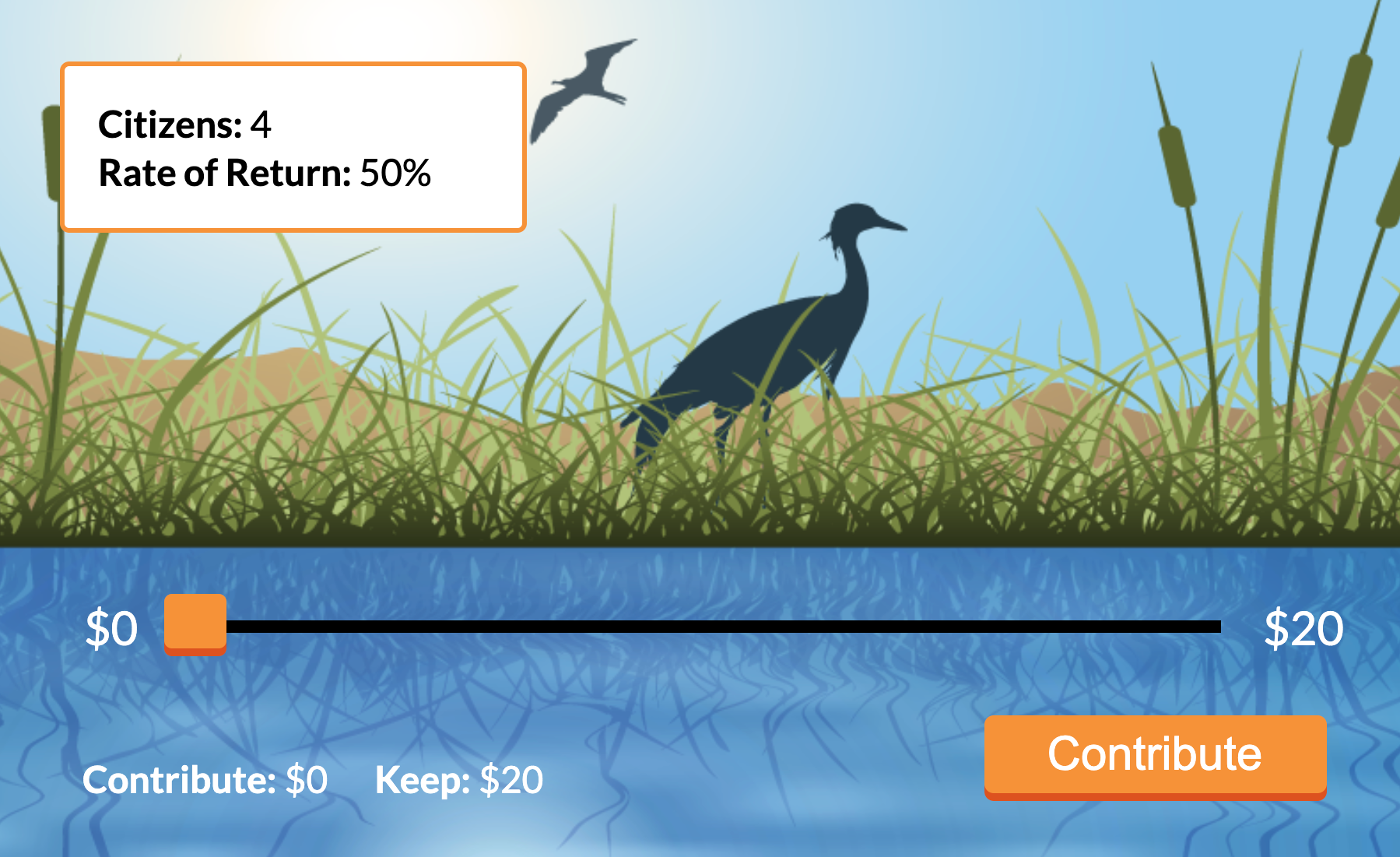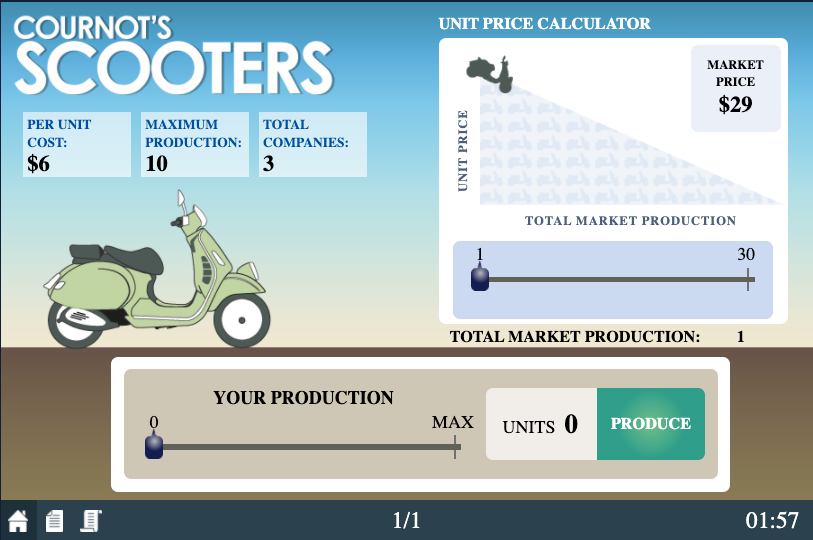Introduction
MobLab games are a great way to get students involved with economic concepts and give them first hand experience as an economic actor. But when should you play a MobLab game? Well, it depends on how you would like your students to be introduced to the material. Let me explain using two examples.
Public Goods Game (Linear)
Example 1: Playing Games Before Theory with MobLab’s Linear Public Goods Game
The concept of public goods is often introduced in the context of market failures. Students who have already learned fundamental economics theories might be more familiar with market goods, making public goods maybe a harder topic to grasp: what does non-excludable and non-rival even mean? Discussing public goods is important though because it introduces students to the tragedy of the commons, the free-rider problem, and the tension between societal benefits and individual benefits. It may be hard for students to grasp the seriousness of these problems from just reading text. If students play this before they learn the theory behind public goods and free-riders, they will experience a sense of frustration as they play the public goods game because some of them will attempt to cooperate while others choose to free-ride. While students might not love this firsthand interaction with free-riders, their frustration makes the lesson memorable and teaches students the true challenges that public goods pose to cooperation before any discussion about the intuition behind public goods, the free-rider problem, and the tragedy of the commons.

Cournot Game
Example 2: Playing Games After Theory with MobLab’s Cournot GameIndustrial organization within economics introduces students to ways of thinking strategically in regards to market competition. The strategic thinking builds on previous theory of the firm and introduces some of the real-world competitive nature of a given industry. In this instance, playing a MobLab game would be most appropriate after students have been introduced to the theory and intuition of different competitive strategies, such as Cournot or Bertrand competition. For example, allowing students to play through the Cournot game after they have learned about competing on quantity will help students grasp the concept even further when seeing it play out in real time. In this instance, the game gives students the ability to apply the theory to an interactive game, testing out their understanding of what they have just learned.
Conclusion
What can be gleaned from these examples?
Would you like to learn more about our online economics games? Get in touch with our team. Click here to schedule a one-on-one demo meeting.

